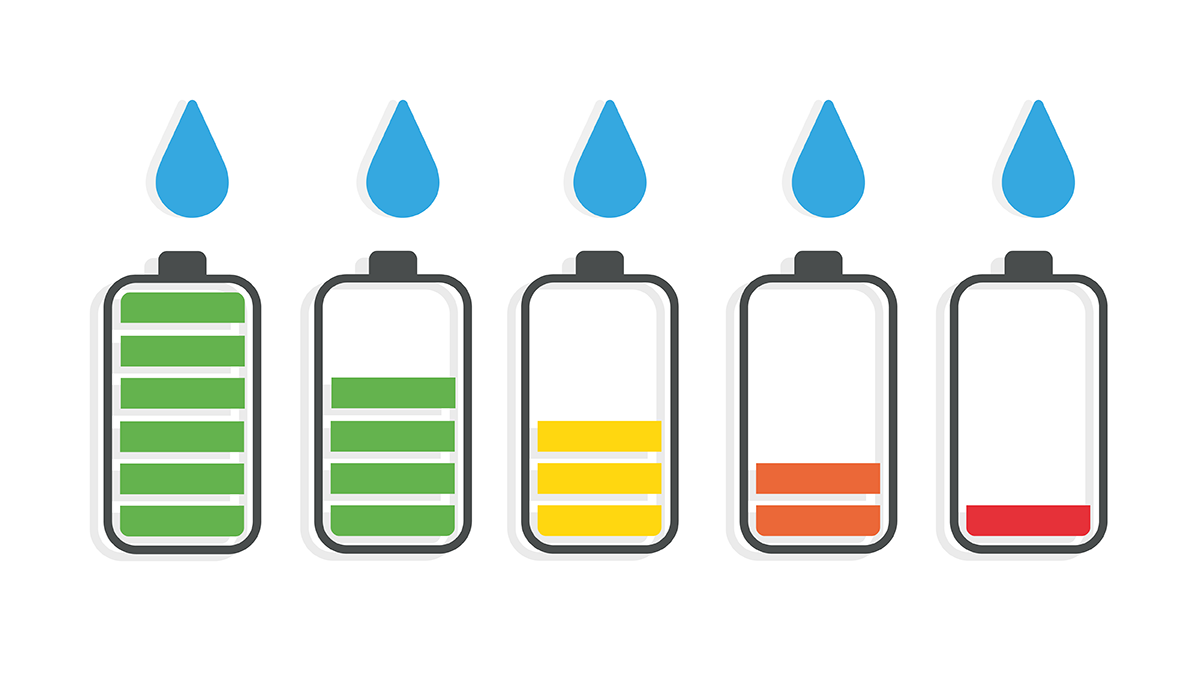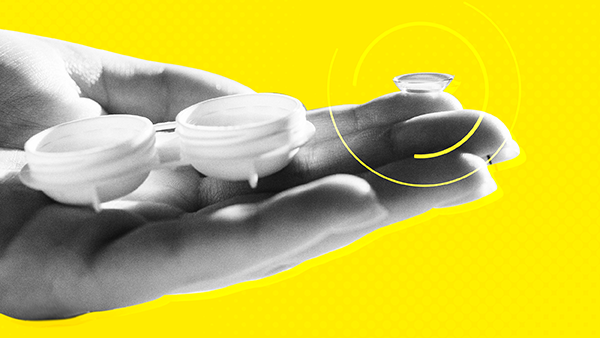You are viewing 1 of your 3 articles before login/registration is required
Crying Out for Recharge
Is a newly developed tear-based battery the future for smart contact lenses?
Although they are still very much a work-in-progress, smart contact lenses look set to revolutionize the eye care field and maybe society as a whole. The technology has the potential – due to its wearability and the fact that everyone (or almost everyone!) has eyes – to usurp smartphones as the favored form of portable computing for the masses.
As the tech continues to advance, there are hopes that so too will the wearer’s ability to use smart contact lenses for more than just vision enhancement – taking advantage of apps and other inbuilt features in the same way they would with their smartphones. A range of features are already in development. Alongside the apps that come as standard on a traditional smartphone (compass, calendar, etc.), smart contact lenses could, for example, combine augmented and mixed reality, allowing wearers to see virtual objects in the real world. And should the wearer have fantasies about being in the SAS, the lenses could switch into night vision mode. They could also be equipped for health monitoring – e.g., allowing users to monitor their blood-glucose levels and their intraocular pressure/temperature, a feature that would be of particular interest to glaucoma patients.
To replicate these kinds of smartphone applications, smart contact lenses will require “invisible computing,” which takes the form of a non-intrusive device, effectively invisible to the user, which performs essential computing functions and adapts to the wearer’s individual needs, so that information is only displayed when it is necessary. For this to become a reality, however, lens batteries need to be further miniaturized and will have to be, if not totally organic, then at least biocompatible with and non-toxic to the human eye.
So, are we any closer to this kind of technology being commercially realized?
Most recently, scientists at the School of Electrical and Electronic Engineering, Nanyang Technological University, Singapore, have invented a biofuel-charged miniature battery, which could provide a solution to charging smart lenses. Created from biocompatible materials and free from wiring or toxic materials, the flexible battery is as thin as a human cornea and stores electricity when immersed in saline solution.
Seok Woo Lee, an associate professor at Nanyang Technological University who led the research, explains: “To satisfy the safe environment requirements of human eyes, all the battery materials applied in our lens battery are biocompatible. Since the ions required by the reaction are all contained in tears, tears can perform as the electrolyte, which eliminates the potential risks caused by the additional electrolytes” – that is, the battery could also be powered by the wearer’s own tears
However, as the researchers note, for every 12 hours of contact lenses wear, tears only add one extra hour of battery charge, meaning that for the time being, even bawling your eyes out for a considerable period of time won’t be enough to keep the batteries powered. But Lee explains that “users can store the lens in the container overnight while sleeping, and the lens can be charged by just being immersed in the glucose solution.”
Though innovative in itself, the battery cannot yet be incorporated into the body of the smart contact lens. “Further research will focus on the improvements in the electrical current amount the battery can discharge to make it able to provide sufficient power to the embedded electronic devices on the smart contact lens,” says Lee, adding that “the required area of the battery is reduced and the circuit design may be simplified as well.”
The research team has now filed for a patent for the device through NTUitive, Nanyang Technological University’s innovation and enterprise company, and is currently in talks with several contract lens companies about implementing the technology into devices. “The industry has been looking for a thin, biocompatible battery that does not contain heavy metals,” says Murukeshan Vadakke Matham, an associate professor at the School of Mechanical & Aerospace Engineering, NTU, who was not involved in the study. This invention, then, could go some way to meeting some of the industry’s unmet needs.
The New Optometrist Newsletter
Permission Statement
By opting-in, you agree to receive email communications from The New Optometrist. You will stay up-to-date with optometry content, news, events and sponsors information.
You can view our privacy policy here
Most Popular
Sign up to The New Optometrist Updates
Permission Statement
By opting-in, you agree to receive email communications from The New Optometrist. You will stay up-to-date with optometry content, news, events and sponsors information.
You can view our privacy policy here
Sign up to The New Optometrist Updates
Permission Statement
By opting-in, you agree to receive email communications from The New Optometrist. You will stay up-to-date with optometry content, news, events and sponsors information.
You can view our privacy policy here









